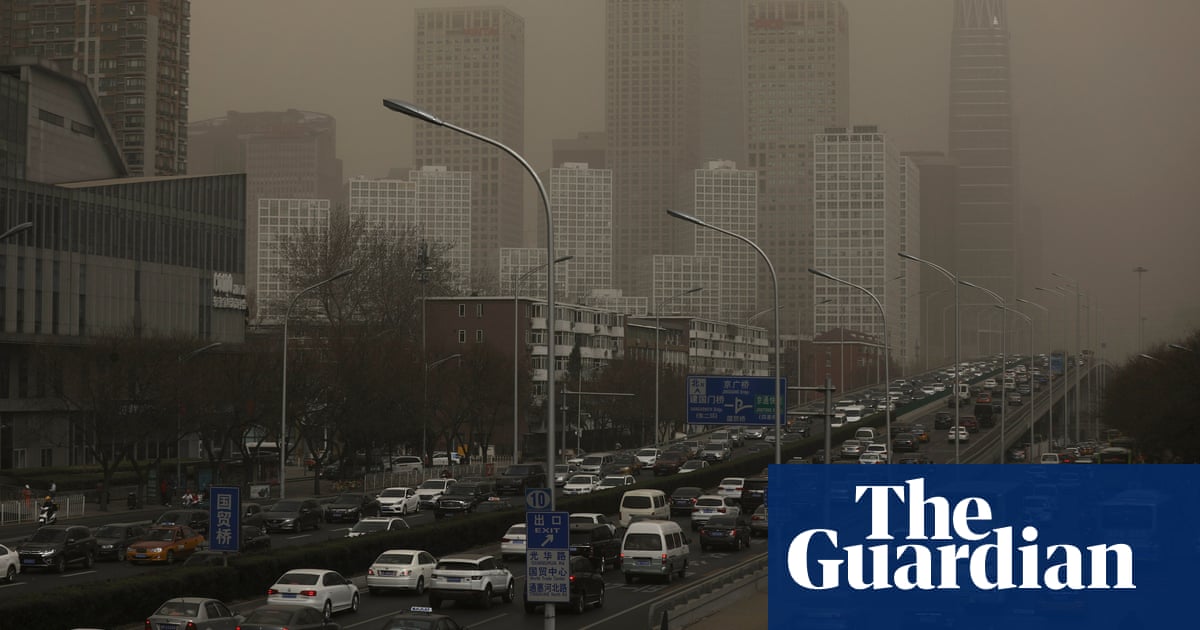China braced for rise in air pollution deaths
China braced for rise in air pollution deaths The Guardian


The Impact of Air Pollution on Public Health in China

Introduction: In 2005, Beijing was crowned the smog capital of the world. Concerns about air pollution and athlete health overshadowed preparations for the 2008 Olympic Games and required industry and traffic shutdowns to clean the air during the event itself.
Tracking the Impacts of Deteriorating Air Quality
A team of researchers at Chinese, German, and Canadian universities have conducted a study to track the impacts of deteriorating air quality in China during that time. They found that particle pollution deaths in China were increasing at about 213,000 per year and peaked at 2.6 million people in 2005.
Positive Developments in Air Pollution Reduction
On a positive note, the study also revealed the impact of rapid improvements in China’s air pollution. There was a decrease of 59,000 deaths per year from 2013 to 2019.
Current State of Air Pollution in China
Despite these improvements, air pollution in China remains far worse than in many developed countries. In 2019, about half of China’s cities failed to meet their own national standards, let alone those from the World Health Organization.
China’s Efforts to Combat Air Pollution
China has implemented comprehensive air pollution action plans to address this issue and win what the government terms the “blue skies defense war.” The country has made significant investments in renewable energy and has set future decarbonization targets.
The Warning: Accelerated Action Needed
However, the research contains a warning. Without accelerated action, air pollution deaths in China will begin to rise soon due to a growing aging population with underlying vulnerabilities that come with age.
Implications for Public Health
Prof Michael Brauer from the University of British Columbia, who was not involved in the research, explains that the same level of air pollution will have a greater impact on an older and less healthy population. Diseases impacted by air pollution, such as lung cancer, diabetes, lung and chronic heart disease, increase with age.
Projected Increase in Air Pollution-Related Deaths
The scale of the challenge is clear in the latest research. China’s air pollution-related deaths are projected to increase by between 116,000 and 181,000 per year from 2030 to 2060, despite continued improvements in particle pollution and healthcare.
The Need for Aggressive Reduction of Air Pollution
To maintain the current progress and prevent a rise in air pollution-related deaths, China needs to reduce air pollution even more aggressively.
Similar Challenges Faced by Other Countries
Many other countries, including the UK and India, face similar challenges as their populations age. It is crucial for these countries to address air pollution and protect public health.
SDGs, Targets, and Indicators
| SDGs | Targets | Indicators |
|---|---|---|
| SDG 3: Good Health and Well-being | 3.9 By 2030, substantially reduce the number of deaths and illnesses from hazardous chemicals and air, water, and soil pollution and contamination | – Number of deaths attributed to air pollution – Number of illnesses attributed to air pollution |
| SDG 11: Sustainable Cities and Communities | 11.6 By 2030, reduce the adverse per capita environmental impact of cities, including by paying special attention to air quality and municipal and other waste management | – Air quality index in cities – Compliance with national air quality standards |
| SDG 13: Climate Action | 13.2 Integrate climate change measures into national policies, strategies, and planning | – Investments in renewable energy – Decarbonization targets |
| SDG 17: Partnerships for the Goals | 17.17 Encourage and promote effective public, public-private, and civil society partnerships, building on the experience and resourcing strategies of partnerships | – Collaborative efforts between Chinese, German, and Canadian universities in researching air pollution impacts |
1. Which SDGs are addressed or connected to the issues highlighted in the article?
SDG 3: Good Health and Well-being
The article discusses the impacts of air pollution on health, specifically mentioning the increase in particle pollution deaths in China and the potential rise in air pollution-related deaths in the future. SDG 3 aims to ensure healthy lives and promote well-being for all at all ages.
SDG 11: Sustainable Cities and Communities
The article highlights the issue of air pollution in China’s cities, with many failing to meet national standards and World Health Organization guidelines. SDG 11 focuses on making cities inclusive, safe, resilient, and sustainable.
SDG 13: Climate Action
The article mentions China’s comprehensive air pollution action plans, investments in renewable energy, and future decarbonization targets. SDG 13 aims to take urgent action to combat climate change and its impacts.
SDG 17: Partnerships for the Goals
The article mentions the collaborative efforts of Chinese, German, and Canadian universities in researching the impacts of deteriorating air pollution in China. SDG 17 emphasizes the importance of partnerships to achieve sustainable development goals.
2. What specific targets under those SDGs can be identified based on the article’s content?
Target 3.9: By 2030, substantially reduce the number of deaths and illnesses from hazardous chemicals and air, water, and soil pollution and contamination.
The article discusses the increase in particle pollution deaths in China and the projected increase in air pollution-related deaths from 2030 to 2060. Target 3.9 aims to reduce deaths and illnesses caused by air pollution and other forms of pollution.
Target 11.6: By 2030, reduce the adverse per capita environmental impact of cities, including by paying special attention to air quality and municipal and other waste management.
The article highlights the issue of air pollution in China’s cities, with many failing to meet national standards and World Health Organization guidelines. Target 11.6 focuses on reducing the adverse environmental impact of cities, particularly in terms of air quality.
Target 13.2: Integrate climate change measures into national policies, strategies, and planning.
The article mentions China’s comprehensive air pollution action plans, investments in renewable energy, and future decarbonization targets. Target 13.2 emphasizes the integration of climate change measures into national policies and planning.
Target 17.17: Encourage and promote effective public, public-private, and civil society partnerships, building on the experience and resourcing strategies of partnerships.
The article mentions the collaborative efforts of Chinese, German, and Canadian universities in researching the impacts of deteriorating air pollution in China. Target 17.17 emphasizes the importance of partnerships in achieving sustainable development goals.
3. Are there any indicators mentioned or implied in the article that can be used to measure progress towards the identified targets?
The article provides indicators that can be used to measure progress towards the identified targets:
- Number of deaths attributed to air pollution
- Number of illnesses attributed to air pollution
- Air quality index in cities
- Compliance with national air quality standards
- Investments in renewable energy
- Decarbonization targets
- Collaborative efforts between Chinese, German, and Canadian universities in researching air pollution impacts
4. SDGs, Targets, and Indicators
| SDGs | Targets | Indicators |
|---|---|---|
| SDG 3: Good Health and Well-being | 3.9 By 2030, substantially reduce the number of deaths and illnesses from hazardous chemicals and air, water, and soil pollution and contamination | – Number of deaths attributed to air pollution – Number of illnesses attributed to air pollution |
| SDG 11: Sustainable Cities and Communities | 11.6 By 2030, reduce the adverse per capita environmental impact of cities, including by paying special attention to air quality and municipal and other waste management | – Air quality index in cities – Compliance with national air quality standards |
| SDG 13: Climate Action | 13.2 Integrate climate change measures into national policies, strategies, and planning | – Investments in renewable energy – Decarbonization targets |
| SDG 17: Partnerships for the Goals | 17.17 Encourage and promote effective public, public-private, and civil society partnerships, building on the experience and resourcing strategies of partnerships |








